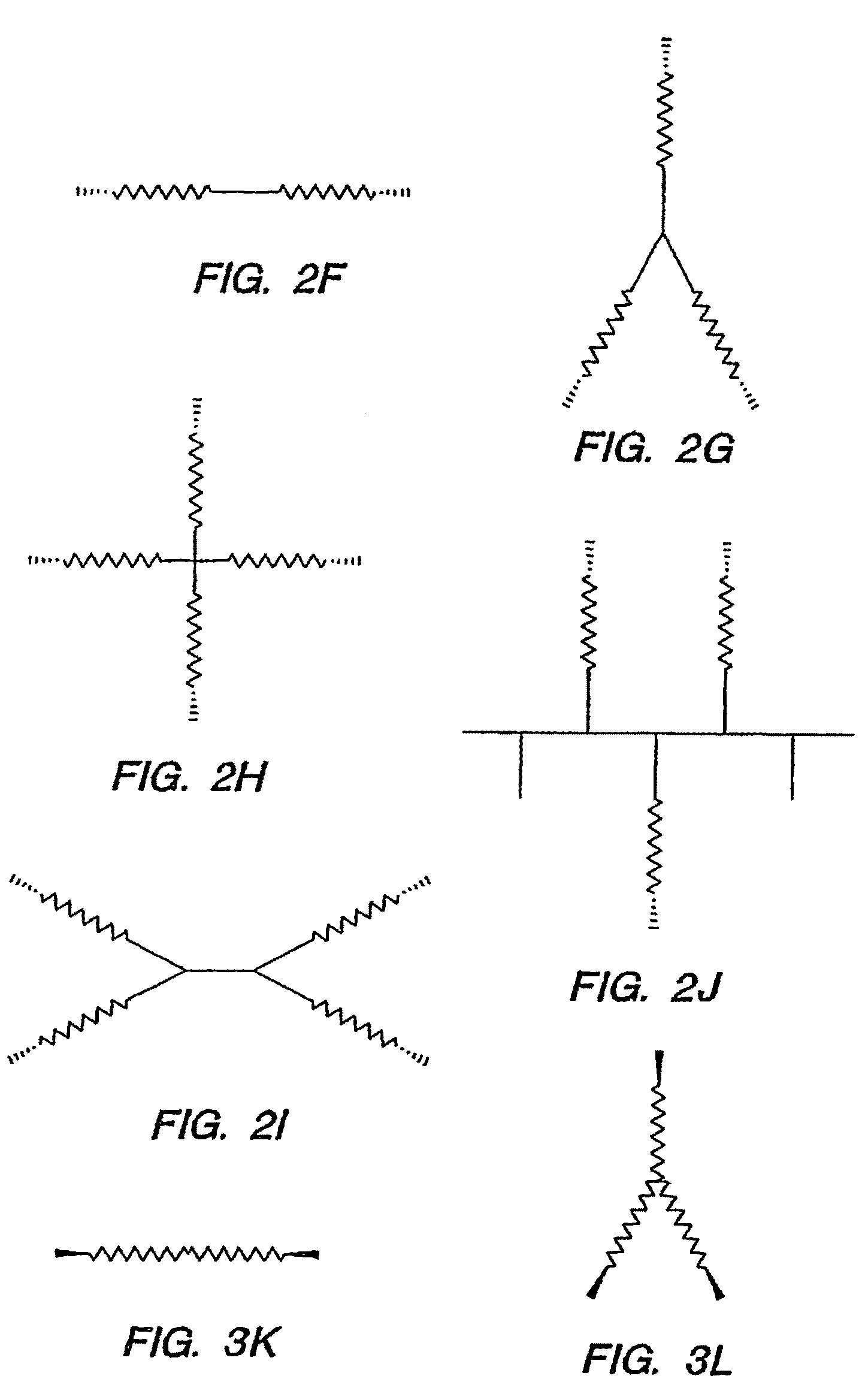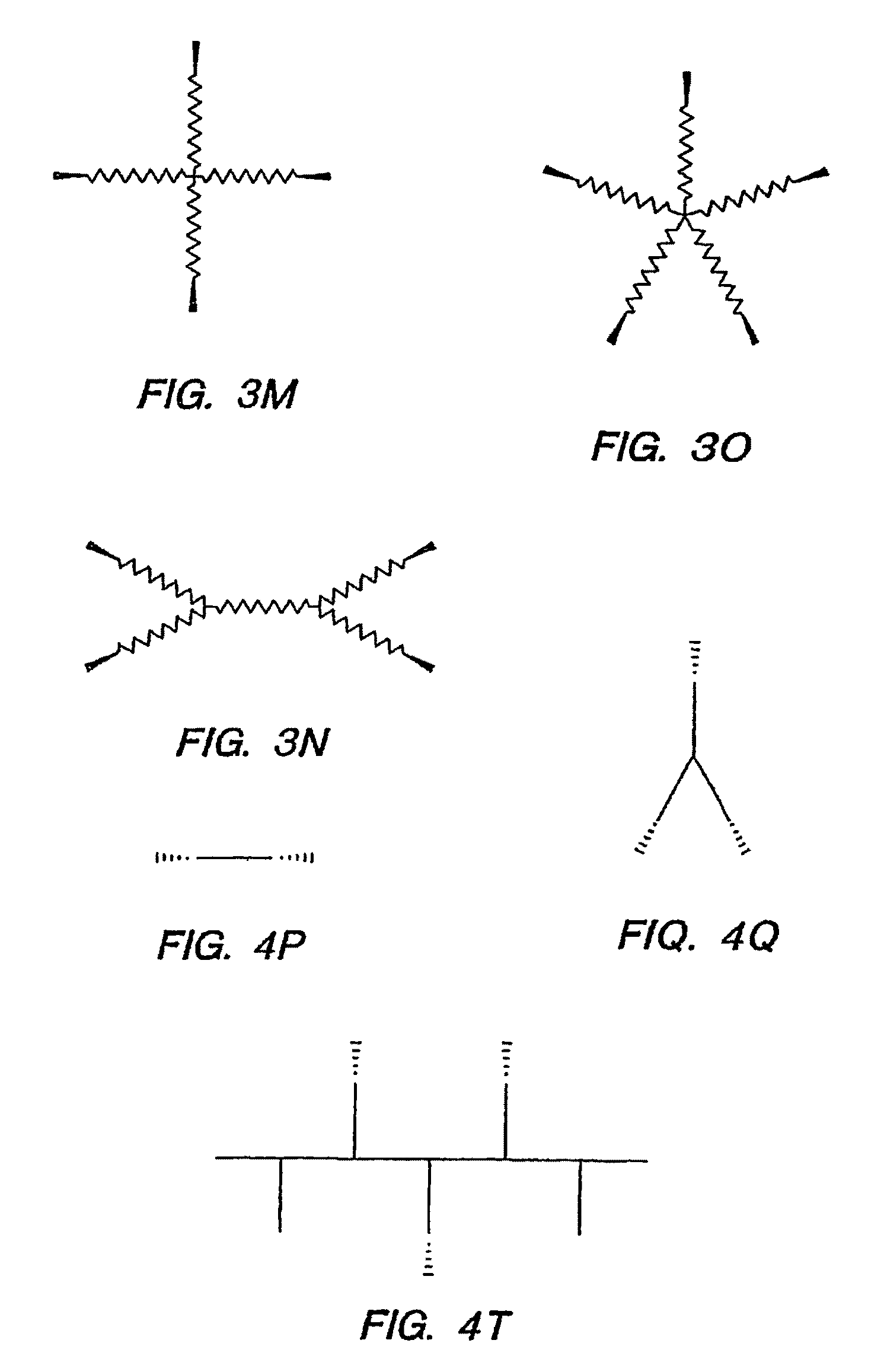Biocompatible hydrogels made with small molecule precursors
a biocompatible, precursor technology, applied in the direction of biocide, prosthesis, fibrinogen, etc., can solve the problems of scar-like masses, difficult to make readily degradable implants using these materials, and difficulty in making readily degradable implants, etc., to achieve the effect of readily degradable hydrogel, readily degradable, and readily degradabl
- Summary
- Abstract
- Description
- Claims
- Application Information
AI Technical Summary
Benefits of technology
Problems solved by technology
Method used
Image
Examples
example 1
Preparation of Synthetic Crosslinked Biodegradable Gels
[0169]1.57 g (0.8 mM) of 4 arm amine terminated polyethylene glycol molecular weight 2000 was dissolved in 10 ml 0.1 M sodium borate buffer at pH 9.5 2 g of 4 arm succinimidyl ester activated polymer (4PEG2KGS, molecular weight 2500) was dissolved in phosphate buffered saline. These two solutions were mixed to produce a crosslinked gel. In another variation of this method, the 4PEG2KGS polymer solid was directly added to the amine terminated polymer solution to produce a crosslinked polymer.
[0170]In another variation, a crosslinker consisting of an equimolar solution of dilysine can be used in place of the 4 arm PEG amine solution to form a hydrogel. Gelation was seen to occur within 10 seconds of mixing the two solutions. The amine terminated polymer solution described above was added with 0.1% of F D and C blue or indigo dye prior to crosslinking reaction. The addition of dye allows the preparation of colored gels.
example 2
Formulation of SG-PEG with Di-Lysine
[0171]A four arm PEG with succinimidyl glutarate (SG) end groups (Shearwater Polymers, approx. 9,100 g / mol, 0.704 grams, 6.5×10−5 moles) was dissolved in 2.96 g 0.01M pH 4.0 phosphate buffer (19.2% solids). Di-lysine (Sigma, 347.3 g / mol, 0.03 grams, 8.7×10−5 moles) was dissolved in 3.64 grams of 0.1M pH 9.5 borate buffer (0.8% solids). On combination of the two solutions, a hydrogel formed having a percent solids of 10%. The di-lysine has 3 amine groups. The SG-PEG has 4 NHS groups. After correction for the less than 100% degree of substitution on the SG-PEG, the formulation gives a 1:1 stoichiometry of amine groups to NHS groups.
example 3
Formulation of SG-PEG with Tri-Lysine
[0172]A four arm PEG with SG end groups (Shearwater Polymers, approx. 9,100 g / mol, 0.675 grams, 6.2×10−5 moles) was dissolved in 2.82 g 0.01M pH 4.0 phosphate buffer (19.3% solids). Tri-lysine (Sigma, 402.5 g / mol, 0.025 grams, 6.2×10−5 moles) was dissolved in 3.47 grams of 0.1M pH 9.5 borate buffer (0.7% solids). On combination of the two solutions, a hydrogel formed having a percent solids of 10%. The tri-lysine has 4 amine groups. The SG-PEG has 4 NHS groups. After correction for the less than 100% degree of substitution on the SG-PEG, the formulation gives a 1:1 stoichiometry of amine groups to NHS groups.
PUM
| Property | Measurement | Unit |
|---|---|---|
| time | aaaaa | aaaaa |
| time | aaaaa | aaaaa |
| time | aaaaa | aaaaa |
Abstract
Description
Claims
Application Information
 Login to View More
Login to View More - R&D
- Intellectual Property
- Life Sciences
- Materials
- Tech Scout
- Unparalleled Data Quality
- Higher Quality Content
- 60% Fewer Hallucinations
Browse by: Latest US Patents, China's latest patents, Technical Efficacy Thesaurus, Application Domain, Technology Topic, Popular Technical Reports.
© 2025 PatSnap. All rights reserved.Legal|Privacy policy|Modern Slavery Act Transparency Statement|Sitemap|About US| Contact US: help@patsnap.com



